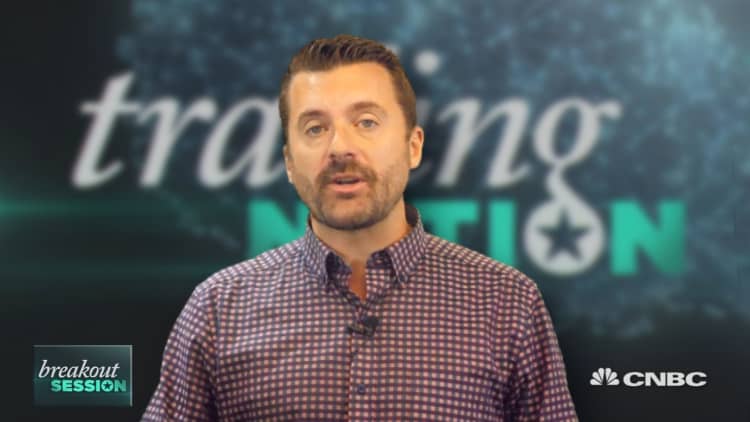
Starbucks is set to surge.
That's at least according to TradingAnalysis.com founder and longtime trader Todd Gordon, who says the stock's sideways trading following Starbucks' late-July earnings report is about to come to an end.
"If you take a look at the chart here, it's a beauty. We have, obviously, a very clean, uptrending stock showing a ton of relative strength compared to the broader markets," Gordon said Tuesday on CNBC's "Trading Nation."
"We've fallen into a little bit of consolidation here following a good earnings report, and provided that the broader market holds in, we should get a resolution higher, up and above the [$]100 mark, following this consolidation break," he said.
That would mark a new all-time high for shares of the coffee giant. Its current record is $99.72, made the day after its third-quarter earnings release in July. Starbucks shares were up less than 1% by midday Wednesday, hovering just above the $96 level.
But, for Gordon, there's a catch in this stock's story that primes it for a counterintuitive trade.
"The implied volatility's actually still quite high here relative to where we've been in the past," the trader said. "We would expect this volatility to continue to move down. What that means for option pricing is it will depress the price of options, both puts and calls alike. So, if we want to express our bullish bias out of that consolidation, we don't want to buy calls."
Although calls — which are typically used to make bullish bets on stocks — would likely be rewarded if the stock goes higher, Starbucks' implied volatility pattern could set traders up for an unwelcome curveball, Gordon said.
"If the implied volatility drops, those calls could be hurt," he said. "A better way, I think, to trade it is to do it with a put credit spread."
A put credit spread is a trade that bets on a slight rise in the price of the underlying asset. It involves selling a higher put, buying a lower put, collecting the remaining credit and allowing it to appreciate.
For Starbucks, Gordon sold the $97.50 put and bought the $92.50 put, both of which expire at the end of October. That left him with a net credit of roughly $1.70. In order to achieve the trade's maximum potential profit, Starbucks shares must trade above the $97.50 level by the trade's expiration.
Here's the rub: "That gives us a max potential loss of $328," Gordon said.
"Now, why would you take a higher-risk trade than a potential reward? Well, the good part about a credit spread is there's a buffer built in in terms of profitability for you," he said. "There's a higher probability of expected return on this trade."
Because the trade breaks even at $95.80, which Gordon found by subtracting the net credit from the higher strike price, traders effectively get "about $1.13 of downside cushion to give you profitability, and that's what you pick up in exchange for giving up a negative return-to-risk ratio," he said.
His one word of warning?
"Be sure to position-size such that if you were to take a max-loss scenario — which, again, is about $330 — it's acceptable within your particular trading account or investment account," Gordon said.
Starbucks shares are up nearly 50% this year.






